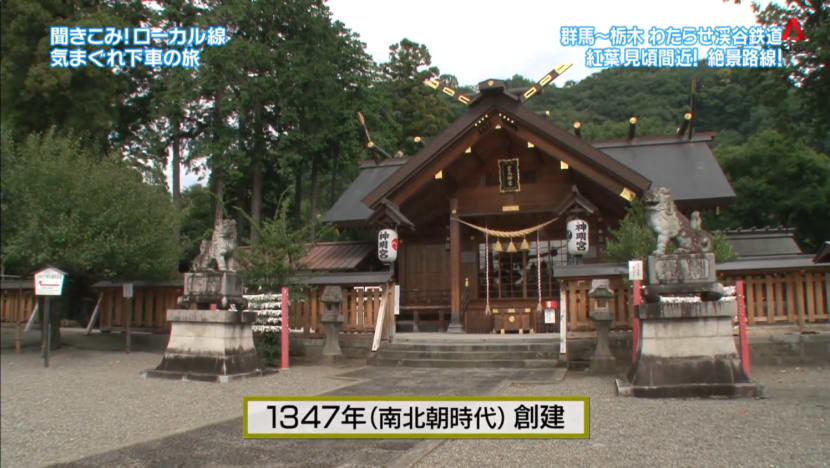Road Trip On Watarase Valley Railway - Part 1
A pine tree seen as a symbol of longevity, a park known for its chrysanthemums, a Japanese restaurant serving an award-winning curry udon, and a square-shaped Jizo statue are featured this week.

Join us as we embark on a two-day trip of enquiry and discovery on the Watarase Valley Railway, also known as the Watarase Keikoku Railway. Connecting Gunma Prefecture and Tochigi Prefecture, it spans 44.1km with 17 stations and runs along the Watarase River. It started to operate in 1911 as the Ashio Railway, which was used to transport ore. In 1989, it was taken over by Watarase Valley Railway and is now a popular line known for its spectacular views.
Our journey starts from Kiryu Station in Gunma. After buying a one-day pass, we board the train at 10.05am and arrive at the unmanned Shimo-Shinden Station after five minutes. We decide to walk towards the neighbouring station of Aioi and ask people for recommended spots along the way. We are told about an udon shop, Furukawa, which serves Kiryu’s famous Himokawa udon. Another resident mentions a famous pine tree in Aioi, along with Nagame Park in Midori City which is known for its chrysanthemums.
We first go to the udon noodle shop. Along the way, we pass by Kiryu Meijikan, an Important Cultural Property due to its Western-style architecture. It was built in the early Meiji period and was previously a hygiene centre and medical school. As the udon restaurant is not open yet, we decide to go see the recommended pine tree in Aioi. The pine tree has been around since the Edo period and has survived typhoons and lightning strikes. It is thus loved by the locals as a symbol of longevity.
We then walk to Aioi Station and take the 11.35am train to Omama station. A resident here tells us about Omama Shrine and Yamamotoya, a restaurant which has won an award for its curry udon. We decide to go to Nagame Park first. The annual chrysanthemum festival held here is one of the largest in the northern Kanto region. After this, we head to the Omama Shrine. Built in 1347 during the Nanbokucho period, it enshrines a local Shinto deity. Our next stop is Yamamotoya. Besides curry udon, its udon with duck is also popular.
We then take the train from Omama Station at 1.30pm. It runs slowly through picturesque mountain villages before reaching Kami-Kambai Station at 1.35pm. This wooden station was built in 1912 is registered as a Tangible Cultural Property. A local here suggests we check out a unique square-shaped Jizo statue carved out of stone. It dates back to the 1750s and is associated with a monk called Eizen. Fukazawa Kaku Jizo has been loved by the locals for many years. It is said to bring good luck for childbirth and raising children. This is the only place in Japan that has a Jizo statue in a shape of a square.
We now have to look for accommodation for the night and a resident mentions Nashigikan near the neighbouring station, Motojuku. We manage to make a booking and request the hotel to pick us up from that station later. We then hop on the 3.05pm train at Kami-Kambai Station and go to Motojuku Station, which is less than five minutes away. We take the inn’s car and after a seven-minute ride on the mountain road, reach Nashigikan, which was established in 1879. Our room is in the annex, which was renovated about 10 years ago. Our suite comprises three Japanese bedrooms which can accommodate up to six people. It is equipped with a private outdoor bath, a fridge stocked with drinks and ice cream, and even a table tennis table.
Tips:
1) A famous pine tree at Aioi is seen by the locals as a symbol of longevity
2) Check out the unique square-shaped Kaku Jizo statue near Kami-Kambai Station












